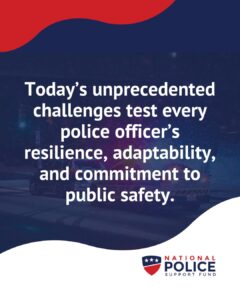In the eyes of most civilians, the job of a law enforcement officer has not changed much over the past few decades: it’s all about serving the community, enforcing the law, and ensuring dangerous people are off the streets. And yet, as society changes, so have its needs and its people, which unavoidably alter police day-to-day operations.
Today’s unprecedented challenges test every police officer’s resilience, adaptability, and commitment to public safety. From armed standoffs to innovative threats and the integration of life-saving technology, we now need new approaches to address the mounting pressures officers face daily.
High-Risk Standoffs Show the Mental and Physical Toll on Officers
The Cedar Rapids Police Department’s recent release of body camera footage from an 11-hour standoff with Christopher Kern provides a sobering glimpse into the extreme conditions officers regularly navigate. The footage shows Kern firing an AR-15 rifle directly at officers positioned in a hallway, even attempting to shoot through interior walls to strike them.
As Sixth Judicial District Judge Jason Besler noted during Kern’s sentencing, it was “luck or grace” that no officers were killed or injured during this “heinous and horrible” confrontation. The standoff exemplifies the unpredictable and life-threatening situations officers must manage while maintaining professional composure and tactical awareness.
Body camera footage has become instrumental not just for accountability but also for revealing the reality officers face when protecting communities. These harrowing encounters highlight the need for comprehensive officer support systems that address both the immediate physical dangers and long-term mental health impacts of police under pressure.
Creative Threats Are Becoming the New Norm
The incident at Woburn District Court near Boston demonstrates how today’s officer safety challenges extend beyond traditional confrontations. When Nicholas Akerberg entered the courthouse wearing a gas mask and tactical gear before deploying pepper spray against court officers, police, and an assistant district attorney, he illustrated how even seemingly secure environments can become danger zones.
Akerberg’s arsenal, which included eight canisters of pepper spray and two smoke canisters, shows the premeditated nature of modern threats facing officers. This type of encounter demands that departments invest in specialized situational awareness training and comprehensive officer wellness support programs that prepare personnel for increasingly unpredictable scenarios.
As these creative threats become more common, law enforcement agencies must continuously reassess and adapt their training protocols while ensuring officers have both the tactical preparation and psychological resilience to respond effectively.

Technology Is Now a Lifesaving Partner
The Oklahoma City Police Department’s Drone as First Responder (DFR) program demonstrates how technology is revolutionizing emergency response capabilities. When a train conductor reported possibly striking someone but couldn’t identify the location, a drone deployed within minutes located the severely injured victim and directed emergency responders to the precise site.
“Access was a huge issue in this instance and knowing which direction to come from, saving those seconds and that’s really what made the difference,” said Lucas Qualls, district chief of support services with the Oklahoma City Fire Department.
These rooftop drone docks, strategically positioned throughout the city, allow responders to launch and receive live footage in under two minutes, drastically reducing response time while keeping officers safer in dangerous terrains or inaccessible zones. The drones’ thermal imaging capabilities also help identify hot spots and potential victims in burning structures, further extending officers’ ability to protect lives without unnecessary risk.
From Responders to Educators: A Growing Civic Role
In Sacramento, the police department is allocating over $33,000 from a $400,000 road safety grant toward education and targeted enforcement operations for bicycle and pedestrian safety. This initiative reflects how modern policing extends beyond traditional crime response to embrace preventative community partnerships.
With Sacramento facing some of California’s highest rates of traffic deaths, including 20 pedestrians and cyclists killed last year alone. The department is adapting its approach to address these pressing community needs. By balancing enforcement with education, officers are working to create safer environments before tragedies occur.
As law enforcement continues evolving to meet the complex challenges of 2025 and beyond, supporting these professionals requires recognizing not just the physical dangers they face, but also embracing the technological tools and community partnerships that allow them to serve more effectively. Through innovation, training, and unwavering commitment, today’s officers are adapting to protect both themselves and the communities that depend on them.
Our Perspective: Support for a New Era of Law Enforcement
To become a police officer, recruits now need more than courage or a will to serve: they also need increasingly refined training, access to technology, and the backing of local leaders.
Stories like the ones above all show the many hats that a police officer must wear. Part protectors, part enforcers, and part public servants, they often delve into rescue and education tasks.
The National Police Support Fund stands behind efforts that equip officers to meet modern challenges head-on safely, ethically, and effectively.







